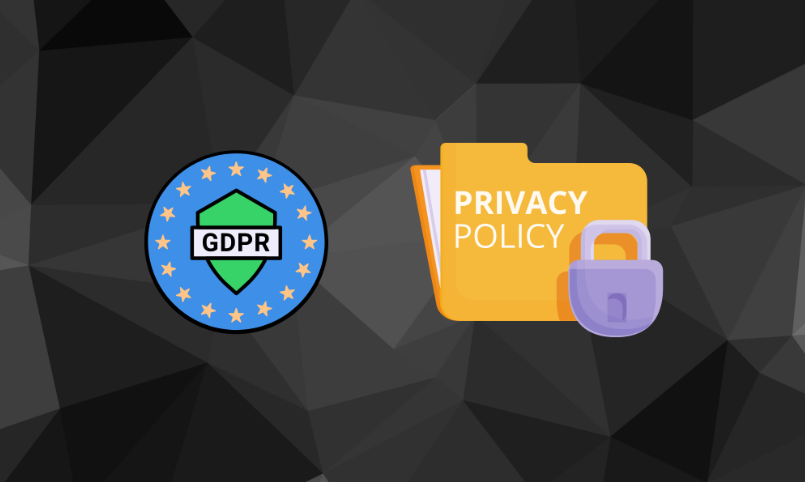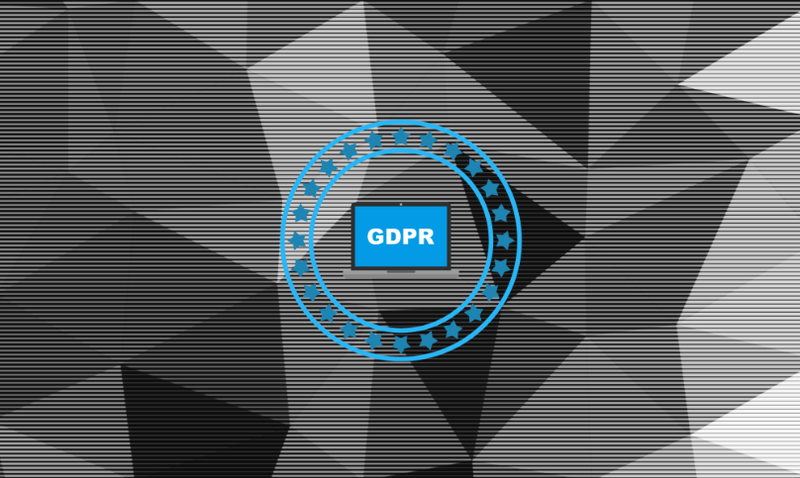
Collecting data from visitors to your website is essential if you want to understand them. However, you need to inform them how you collect their personal information.
In this article, we’ll give you a clear GDPR privacy policy template and explain how best to use it to benefit your business and consumers.
Let’s dive right in.
The General Data Protection Regulation (GDPR) Explained

The General Data Protection Regulation, or GDPR, is a set of regulations the European Union (EU) passed down in 2016 to protect the personal data of EU citizens.
Here are the seven principles of GDPR:
- Lawfulness, fairness, and transparency: Personal data must be collected and processed in a legal, fair, and transparent manner
- Purpose limitation: You must collect personal data for a specific, explicit, and legitimate purpose
- Data minimization: Collected personal data must be limited to only what is relevant and limited to the purpose for which it is collected
- Accuracy: Personal data must be accurate, and data subjects have the right to request rectification of incorrect data
- Storage limitation: You can store personal data only for the period that you’re actively using it for a specified purpose, after which you have to anonymize it
- Integrity and confidentiality: You must keep the data you collect secure from internal and external threats such as accidental loss, destruction, and unauthorized and unlawful processing
- Accountability: Your organization is held accountable for the way it handles consumers’ personal data and if it’s following all the GDPR privacy rules
Finally, it’s also important to add that failure to comply with GDPR brings possible types of fines. These are based on the severity of the violation:
- For less severe violations, the fine is either up to €10 million or 2% of the businesses’ annual global turnover (whichever is higher)
- And for more severe the fine is €20 million maximum or 4% of the business’s annual global turnover (again, whichever is higher)
Understanding the Importance of a GDPR Privacy Policy

Having a clear and concise GDPR privacy policy on your website is important for several reasons. Here’s a list of them:
- Strengthen consumer trust: Communicating the measures you’ve taken to comply with GDPR reassures visitors that their data is safe and secure in your hands.
- Comply with the law: GDPR is a legal requirement in Europe, which means that having an updated privacy policy on your website helps you abide by it and avoid any potential fines.
- Build meaningful relationships: By being upfront about how their information will be handled so visitors to your site can feel reassured when sharing personal data—allowing them to develop more trusting and meaningful relationships with your business.
- Increase transparency: For consumers to give their data, they need to feel like companies are transparent about how it’s collected and used— a GDPR-compliant policy on your website showcases that information in an easy-to-understand format so visitors know exactly what happens with the data they provide you.
- Create trust with search engines: Browsers like Google and Bing want to ensure the websites they feature are legitimate. Having a GDPR privacy policy on your website shows that you’ve taken serious steps to look after users’ data—helping improve rankings in their search engine results.
Key Components of a GDPR Privacy Policy
The GDPR privacy policy should include the following sections. This is generally the order we recommend websites to use, but it doesn’t need to be in this order:
- Basic info about the privacy policy: This section should outline general information pertaining to this Privacy Policy, such as its name and purpose.
- Definition of terms: Terms used in this document with a legal meaning may be defined here to ensure that users understand them accurately. Common terms to define are “Personal Data,” “Data Controller,” and “Processing.”
- Use of consumer data: This section should include details on how the company uses personal information it has collected from users, such as for marketing purposes or to improve its services.
- Types of data collected: List each type of user information the company collects and how it is used, including names, email addresses, or bank account numbers.
- Personal data retention: Describe the company’s policies for retaining customer information, such as when and why it will be deleted.
- Data processing information: Provide details on the company’s methods for data processing, such as pseudonymization or encryption.
- Disclosure to 3rd parties: Explain if and how personal consumer data is shared with third-parties and the reasons behind it.
- Data transfer: Outline what measures are in place to ensure data is safe during transfer, such as encryption or carrying out an assessment on security implications whenever personal information crosses borders.
- Data security: Show the technical and organizational measures implemented by the company to keep customer information secure from unauthorized access and accidental loss. Common measures include encryption, access control, and backup systems.
- Legal basis for data processing under GDPR: Explain the legal reasons behind why customer information is collected and processed, such as providing a service or engaging in direct marketing activities.
- GDPR data subject rights: Outline the various individual GDPR-related protections that are available to consumers, including the right of access, erasure, and other GDPR data subject rights.
- Exercising GDPR data subject rights: List out how users can exercise their GDPR-related rights with regard to the information held by the company.
- Children’s Privacy: Provide any special considerations for data related to children, and outline the steps taken by the company to protect minors’ privacy. Outline that consent from the guardian must be given if the individual using the website is under 16.
- Links to 3rd-party websites: State if the website is linked to external websites and whether those sites are GDPR compliant.
- Privacy policy changes and updates: Explain how the customer can be notified of changes to this policy and inform them that periodic reviews are conducted.
- Contact us: Include information on who customers should contact with any GDPR-related questions or if they need help exercising their rights.
Of course, this is a general overview, and your privacy policy may vary based on the specifics of your business.
Note that GDPR never explicitly mentions a “privacy policy” by name. However, articles 12, 13, and 14 refer to GDPR privacy policy requirements:
- Article 12 (Transparent information, communication, and modalities for the exercise of the rights of the data subject)
- Article 13 (Information to be provided where personal data are collected from the data subject)
- Article 14 (Information to be provided where personal data have not been obtained from the data subject)
Tip: It’s also good compliance practice for the cookies policy to link to the privacy policy, along with an accessible link to the privacy policy at the bottom of every page on the website.
Using GDPR Privacy Policy Templates
You can use this GDPR privacy policy template completely free of charge to create a privacy policy that best reflects your business needs, protects your consumers, and ensures compliance with relevant laws and regulations.
This is a general privacy policy template that must be customized to fit your specific needs.
Importance of Customizations

Of course, every organization is different, which should reflect in its GDPR privacy policy.
This is why you cannot simply copy/paste a privacy policy from another website and call it a day.
Instead, you have to carefully tailor your privacy policy based on your business needs, consumers, industry best practices, and relevant regulations of your country.
Using a copy/paste template is not a good choice because it can lead to compliance errors which can mean hefty fines. Your privacy policy must reflect what happens on a precise level.
Questions Your GDPR Privacy Policy Should Answer
When reading your privacy policy, the visitor should be able to understand:
- What data are you collecting?
- Why are you collecting this data (purpose)?
- How will you store data, and for how long?
- How will you use this data?
- What 3rd parties will you share data with?
- What rights do the users (data subjects) have, and how can they exercise those rights, especially children’s privacy, if you’re collecting data from minors
- Any privacy policy changes
- How to contact you?
Your privacy policy should be clear and easy to understand. In other words, use clear and concise language and avoid unnecessary legal or technical jargon.
Updating and Maintaining the GDPR Privacy Policy
It will often be necessary to update your GDPR privacy policy to reflect any regulatory changes and ensure continued GDPR compliance.
Regularly maintain and keep your privacy policy up-to-date and inform your users about this.
Tip: Consider adding a “last updated” date on the policy page to ensure users are always aware of any changes or updates.
Ensuring Compliance with GDPR’s Privacy Policy
Your GDPR privacy policy is vital to ensure your business’s full compliance with the applicable laws and regulations and to protect your consumers’ data privacy rights.
To meet GDPR privacy policy compliance requirements fully, you must:
- Identify and fully convey what data your business collects, stores, and processes
- Obtain clear consent from your consumers to use their data
- Clearly explain how you will store, process and collect data
- Explain data subject rights and establish adequate processes to exercise them
- Appoint a data protection officer (DPO)
- Secure data from unauthorized and unlawful access, accidental loss, or destruction
- Have a data breach response plan
- Perform DPIA for high-risk data
- Educate and train your employees regularly on compliance best practices
- Review and audit your data-collecting, storing, and processing activities
Closing
With this GDPR privacy policy template, you can create a privacy policy that best demonstrates your business and consumer needs.
Remember to customize this template to meet your particular legal, business, and customer needs.
Get in touch with Captain Compliance today, and we’ll help ensure your business compliance.
FAQs
Do I Need to Have a GDPR Privacy Policy?
If your business collects, processes, and stores EU citizens’ data, you should have a clear GDPR privacy policy on the website.
Learn more about GDPR compliance requirements here
How do I Create a GDPR Privacy Policy?
Write an easy-to-understand GDPR privacy policy that explains the legal basis for collecting and processing your visitors’ data and how long you intend to keep this information.
Learn more about drafting a privacy policy here
Can You Write Your Own Privacy Policy?
Yes, you can and should write your own privacy policy to ensure that the privacy policy reflects the specific needs of your business and that you’re not simply “borrowing” from others.
Do You Need a Privacy Policy for GDPR?
Any business that handles personal data from EU citizens is required by the GDPR to disclose this to its consumers through a privacy policy on its website.
The GDPR doesn’t mention “privacy policy.” However, several Articles, including 12, 13, and 14, talk about informing data subjects about the processing of their data.
Learn more abot GDPR compliance solutions here
Do I Need a Privacy Policy if I don’t Collect Any Data?
Even if you don’t collect data, you still need a privacy policy to inform your visitors that you don’t process their data.